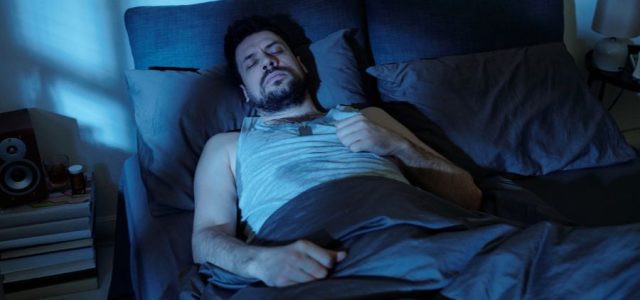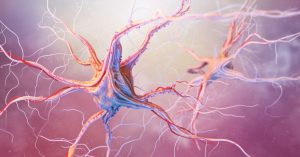
A 42-year-old man came to me after months of waking drenched in sweat — classic night sweats from Babesia, though no one had considered it. He’d been told it was anxiety, hormones, or medication — anything but infection. Being told “That’s not from Babesia” is more than misinformation — it’s a dismissal that can delay recovery for years.
Night sweats caused by Babesia is a clue often missed in clinical practice. These sweats — especially when cyclical, drenching, or accompanied by chills and fatigue — are among the hallmark signs of Babesia, a malaria-like parasite commonly transmitted alongside Lyme disease. Yet they remain one of the most dismissed symptoms in co-infection diagnosis.
Mislabeling infection-driven symptoms as hormonal or emotional is one of the most common ways Babesia gets overlooked, especially in patients with chronic Lyme disease.
🩺 Symptoms Get Blamed on Hormones or Stress
Patients with Babesia are often told their night sweats come from anything but infection — menopause, thyroid disease, anxiety, or medication side effects. While those causes are real, Babesia deserves a place on the list — especially in anyone with a history of Lyme disease, outdoor exposure, or unexplained fatigue.
If your night sweats come with shortness of breath, chills, heart palpitations, or cyclical patterns, that combination is a crucial diagnostic clue — not a reason to dismiss your symptoms.
🌙 When Menopause Isn’t the Whole Story
For women in menopause or perimenopause, the overlap can be confusing — and costly. Hot flashes and night sweats are indeed common in hormonal transition, but infection-driven sweats from Babesia often feel different: drenching, cyclical, and exhausting. Patients may wake completely soaked, with racing heartbeats or chills that don’t fit the usual menopausal pattern.
The danger is assuming hormones explain everything. Some women are left untreated for months or years because their symptoms were written off as “just menopause,” when infection was quietly driving the same physiology.
In these cases, both explanations can be partly true — hormonal change can magnify infection symptoms — but missing Babesia means missing the chance to fully recover.
Clinical tip: When a woman in midlife reports night sweats with fatigue, chills, or air hunger, don’t stop at hormones. Ask whether tick exposure or co-infections could be part of the story.
🌡️ Recognizing the Infection’s Rhythmic Pattern
Unlike hormonal night sweats, which may be random, Babesia symptoms often cycle — drenching sweats for several nights followed by a period of relative calm. That fluctuation reflects the parasite’s red-blood-cell life cycle, similar to malaria.
Patients may describe waking soaked one week, then feeling almost normal the next — only for the symptoms to return. Recognizing this rhythm helps distinguish infection-driven sweats from hormonal or metabolic causes.
🫁 The Link Between Air Hunger and Co-infections
Some patients describe shortness of breath or chest pressure at night — what they call “air hunger.” This isn’t anxiety; it reflects oxygen imbalance from red-blood-cell infection and autonomic disruption.
When sweats, chills, and breathlessness appear together, Babesia should move to the top of the differential. These symptoms may intensify after exertion or during die-off reactions, offering another clinical clue.
🧬 Standard Babesia Tests Can Miss Chronic Infection
Standard Babesia tests often fail to detect chronic infection. Antibody levels can fade, and blood smears only catch parasites when levels are high.
PCR and antibody testing can miss low-level infections or non-microti species such as Babesia duncani, which is increasingly reported across the U.S., not just on the West Coast. That’s why diagnosis often depends on clinical patterns — not just lab results.
If your symptoms fit but your test says “negative,” that doesn’t mean Babesia isn’t there — it means it’s hiding.
🌗 When Babesia Doesn’t Follow the Textbook
Only about half of patients with Babesia experience classic drenching night sweats. Others may have milder heat intolerance, subtle temperature swings, or no sweating at all — especially in chronic or partially treated infections.
Some patients notice their sweats fade after early treatment, only to return months later when the infection reactivates or co-infections flare. The absence of night sweats doesn’t rule Babesia out.
In fact, many long-term cases present instead with air hunger, chest pressure, dizziness, or persistent fatigue, reflecting the same red-blood-cell dysfunction driving the sweats in other patients.
🧠 What Research Reveals About Babesia and Lyme
Studies show that up to 40 % of Lyme disease patients in some regions have evidence of Babesia co-infection. Research by Krause et al and others found that patients with Lyme who also have Babesia report more severe fatigue, fevers, and sweats — and slower recovery when Babesia is untreated.
Babesia microti remains the most common species in the U.S., but Babesia duncani has emerged as a clinically significant strain, causing similar or even more severe symptoms — sometimes with greater treatment resistance.
The CDC recognizes Babesia infections as a cause of prolonged fever, anemia, and drenching night sweats — particularly in immunocompromised or chronically ill individuals.
So yes — night sweats can absolutely be from Babesia.
References
Centers for Disease Control and Prevention. Babesiosis
International Journal of Parasitology (2019). Human babesiosis
Dr. Daniel Cameron: Lyme Science Blog. Babesia and Lyme — it’s worse than you think
Dr. Daniel Cameron: Lyme Science Blog. How to treat Babesia – a review of 38 cases at the Mayo clinic.


